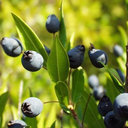New compounds, chemical composition, antifungal activity and cytotoxicity of the essential oil from Myrtus nivellei Batt. & Trab., an endemic species of Central Sahara.
Keywords
Abstract
UNASSIGNED
Myrtus nivellei Batt. & Trab. (Myrtaceae) known as Sahara myrtle is appreciated by the Touaregs as medicinal plant. Infusion of leaves is employed against diarrhea and blennorrhea. Crushed leaves added to oil or to butter ointment have been traditionally used for the treatment of dermatosis. Aim of the study is to consider the traditional medicinal uses and the lack of scientific studies on their biological activities, the present study was designed to elucidate the chemical composition, the antifungal activity of its essential oils against fungi responsible for human infections, as well as, its cytotoxicity in the mammalian keratinocytes.
METHODS
Chemical analysis of Myrtus nivellei essential oil isolated by hydrodistillation of aerial parts (leaves and flowers), was carried out using a combination of chromatographic (CC, GC with retention indices) and spectroscopic techniques (MS, (13)C NMR, 2D NMR). The antifungal activity was evaluated by using broth macrodilution methods for yeasts and filamentous fungi. Cytotoxicity was tested in HaCaT keratinocytes through the MTT assay.
RESULTS
Ten samples coming from two localities of harvest were investigated. The chemical composition was largely dominated by 1,8-cineole (33.6-50.4%) and limonene (17.5-25.0%). The structure of two new compounds bearing the isoamylcyclopentane skeleton has been elucidated. The oil was more active against Cryptococcus neoformans with MIC of 0.16μL/mL followed by dermatophytes, with MICs of 0.64 and 1.25μL/mL. Furthermore, evaluation of cell viability showed no cytotoxicity in HaCaT keratinocytes at concentrations up to 1.25µL/mL.
CONCLUSIONS
The composition of Myrtus nivellei oil differed from that of Myrtus communis. The structure of two di-nor-sesquiterpenoids has been elucidated. It was possible to find appropriate doses of Myrtus nivellei oil with both antifungal activity and very low detrimental effect on keratinocytes. These findings add significant information to the pharmacological activity of Myrtus nivellei essential oils, specifically to its antifungal properties, thus justifying and reinforcing the use of this plant in traditional medicine.




